To those who do not follow Sardinian current events, the Feb. 10 agency report came as a bolt out of the blue: the Cabras municipality closes the town museum and deploys police in front of the gates to prevent the local Superintendency, based in Cagliari, from carrying out an inspection. An inspection aimed at transferring four statues from the sanctuary of Mont’e Prama (two “giants” and two nuraghe models) to laboratories in Cagliari for restoration.
The action actually comes at the end of a tense week, to say the least, in which Mayor Andrea Abis had from the outset placed his firm “no” to a restoration taking place outside the municipality of Cabras, in the Oristano area. But under Italian law, a municipal administration has no power to decide when and where to implement routine restorations, which are the responsibility of the Ministry of Cultural Heritage. And so here was first an uprising by the population, described by local newspapers as opposition to an “act of force” or “snatching” by the Regional Superintendency, then a stance by the Central Directorate General, which went on to emphasize that at the end of the restorations all the statues in question would return to Cabras, up to the unilateral closure of the museum, with deployment of police forces: an institutional clash in full swing, between state and municipal powers. But how is it possible that all this happened for a restoration, as hundreds of them take place every day throughout Italy, which only involved a temporary transfer to a laboratory? Let’s take a step back.
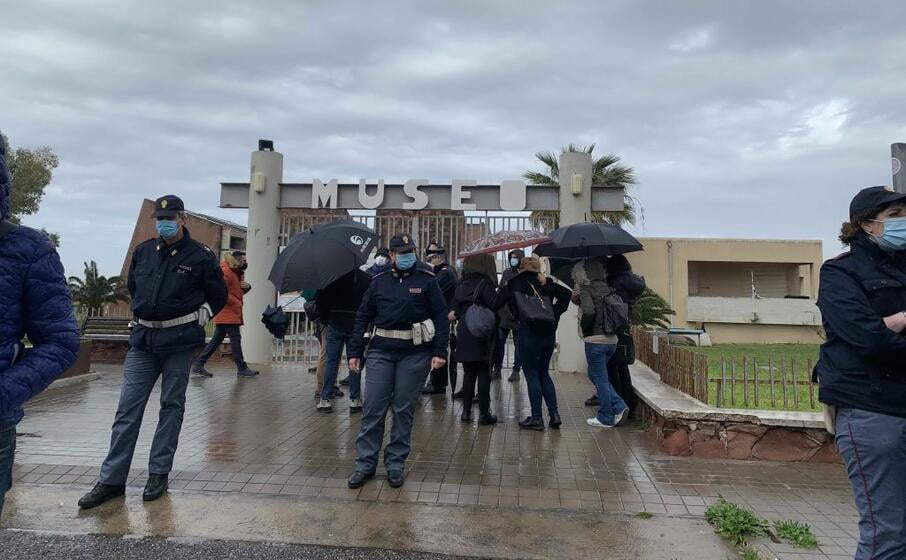 |
| Police in front of the Giovanni Marongiu Civic Museum in Cabras on February 10. Ph. Monte Prama Novas |
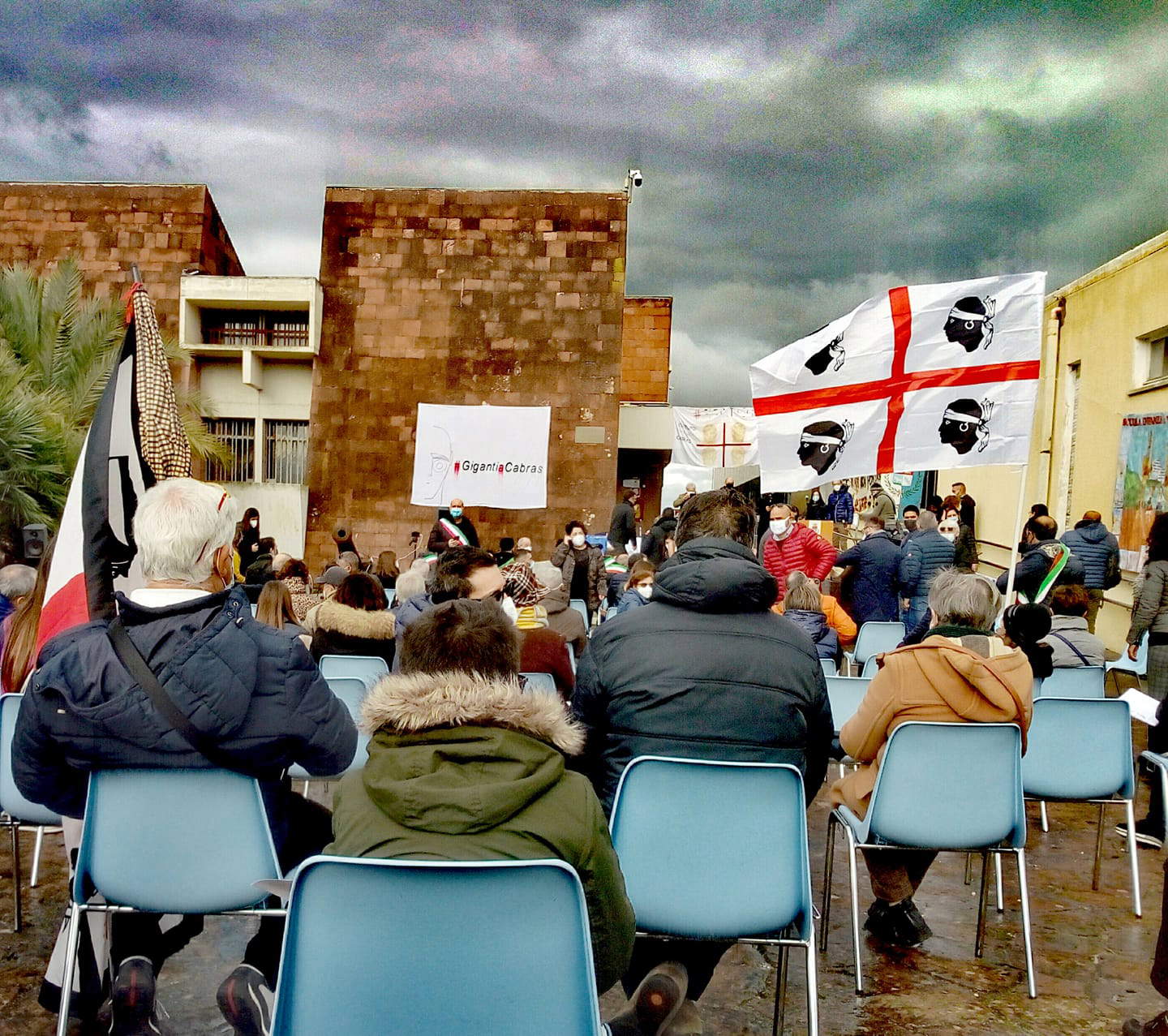 |
| February 13, demonstration to keep the Giants in Cabras. Ph. Credit Mizio Cambas |
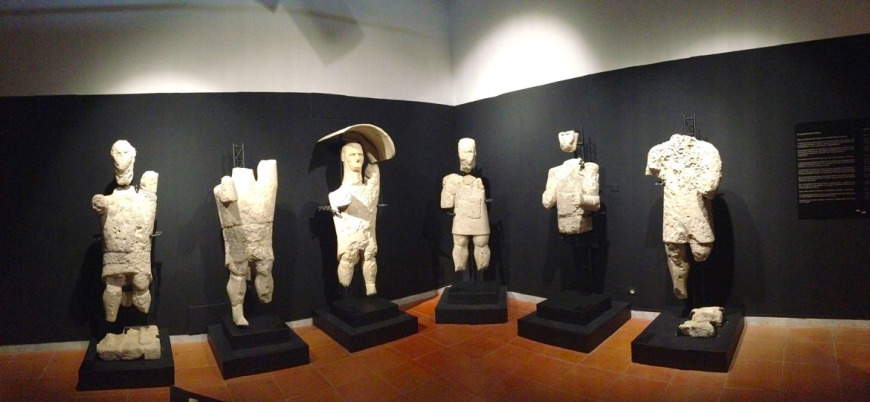 |
| The Giants of Mont’e Prama at the Museum of Cabras. |
The so-called “Giants” of Mont’e Prama are reproductions of warriors, archers, nuraghi, unparalleled in the Western Mediterranean of the early Iron Age (the statues are dated between the 9th and 8th centuries B.C.) that adorned a monumental necropolis discovered in 1974-75 in the locality of Mont’e Prama, in the territory of the Municipality of Cabras (Oristano). For the past twenty years or so, the necropolis, and in particular the exceptional statuary, has become the scene of a political-ideological clash of enormous proportions, a clash that takes its cue from a widespread conspiracy theory that is based, essentially, on the idea that the Italian state, through the local Superintendency, aims to deny the greatness of past Sardinian History (you can find its basic points here). The theory, which rests on the idea that the greatness of the Sardinian past is “opposed by the strong powers,” has actually always had great support both in the local press and on national TV, starting with RAI3, which with Mario Tozzi periodically offers new life to these baseless theses (an episode of Gaia, aired in 2003, gave the first and fundamental visibility), up to the most recent support of Corriere della Sera and Le Monde dated September 2019.
In the midst of this huge clash was the small municipality of Cabras (population 9,000) to which, in 2017, an agreement was submitted regarding the creation of the "Monte Prama Foundation," which, in spite of its name, should not only deal with Mont’e Prama, but also with the archaeological area of Tharros, the hypogeum of San Salvatore, the Museum of Cabras, and the entire local cultural and museum heritage: sites that recorded, before the lockdown, about 150,000 visitors a year. The foundation was to be participated in by the Ministry, the municipality and the region, despite the fact that Mont’e Prama is not a state site: the land is owned by the curia, which manages it together with the municipality of Cabras under an agreement. The Municipality and Region, after carefully reading the bylaws (never made public by MiBACT), which stipulated among other things that all management profits go to the foundation and the president be appointed by the Ministry, refused participation. Since then, ministers, undersecretaries and much of the regional press (especially La Nuova Sardegna, of the Espresso group) have been exposed to induce the municipality to agree.
 |
| Detail of the boxer statue |
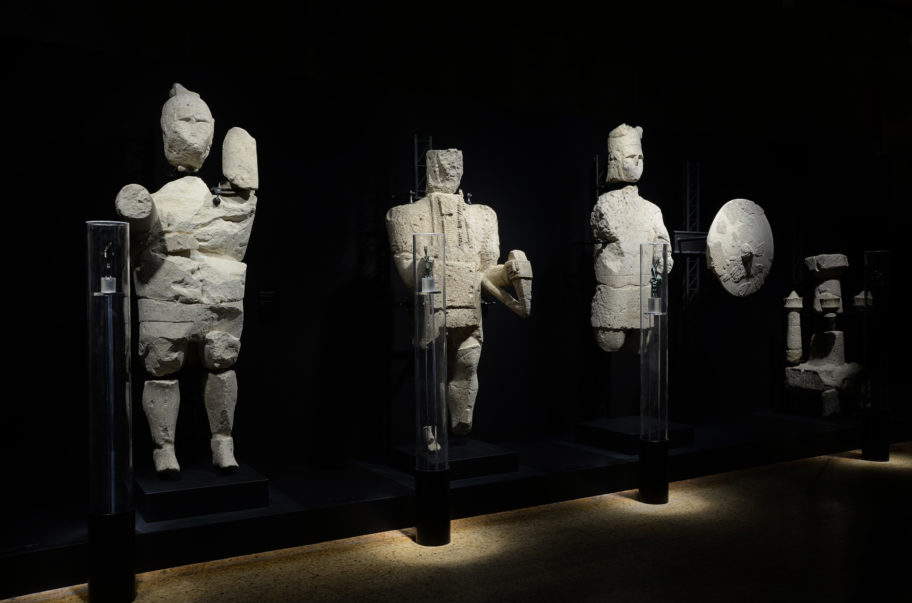 |
| The Giants of Mont’e Prama at the National Archaeological Museum in Cagliari in 2017 |
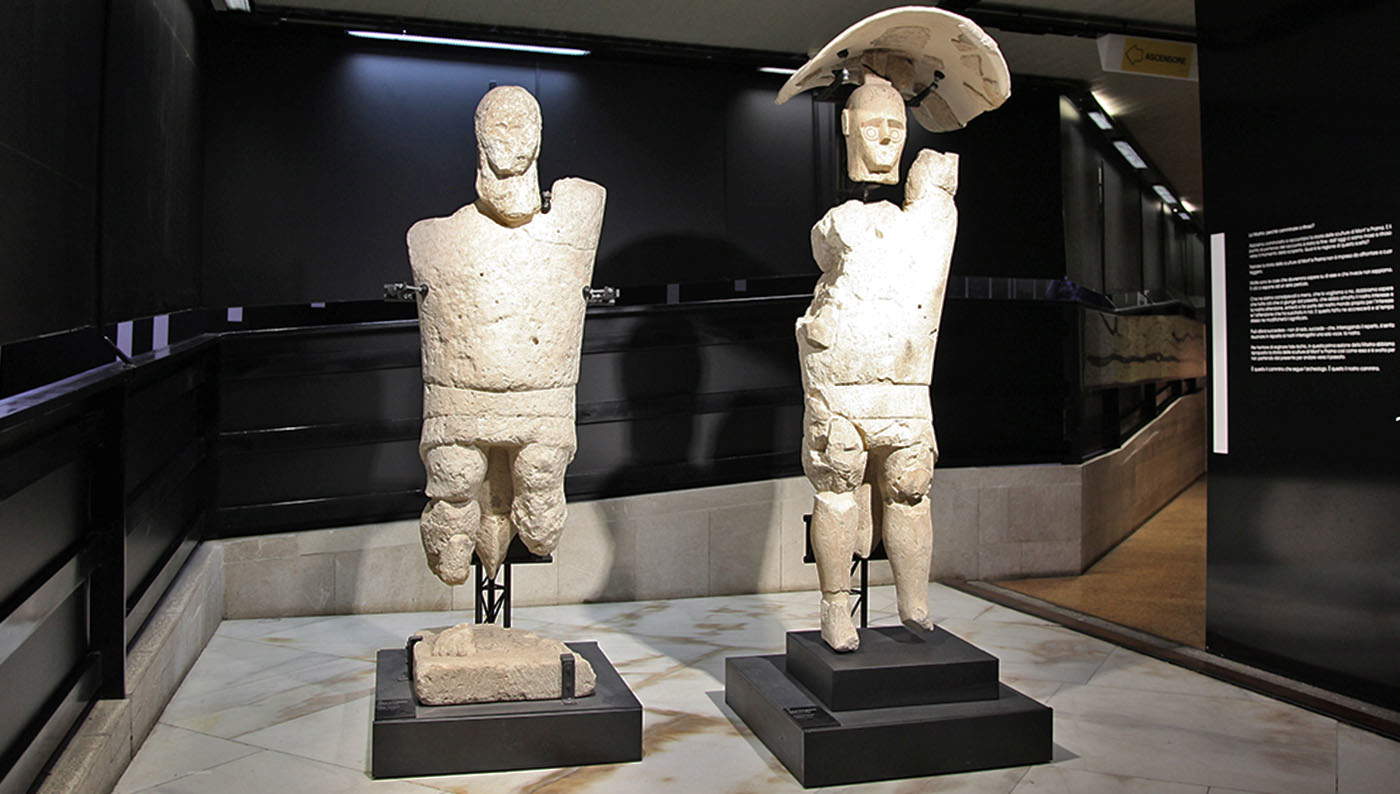 |
| The Giants of Mont’e Prama at the National Archaeological Museum in Cagliari in 2017 |
This is one of the elements that may explain the mayor’s suspicion: even the note from the Directorate General for Archaeology dated Feb. 9, which although reassures the mayor about the statues’ imminent return to Cabras, concludes lapidarily that the Ministry has committed itself with an agreement "that will have to lead to the creation of a foundation deputed to the management of the Museum.“ Does the mayor, who has attended a series of meetings closed to the public, fear that the state may hold the statues ”hostage" in Cagliari until the agreement is signed? Nothing of the sort has ever been explicitly stated in the many interviews he has given, yet the mayor’s words (“How can you agree to such an intervention without guarantees?” ) seem to indicate that there is a fear that goes far beyond the restoration in question: moreover, the local Superintendency, after the 2014 Franceschini reform, does not even have space or ways to display anything. But there exists in the minds of Cabras residents the precedent of the Giants exhibited at the National Archaeological Museum in Cagliari since 2014 in a “temporary” exhibition that, according to an agreement dated 2011, should have ended long ago with the return of almost all (except one by type) of the statues to the Cabras Museum: but the Franceschini reform, the transfer of competencies from the Superintendency to the newly created Polo Museale (now the Autonomous Museum) and the agreement proposed in 2017 and not yet implemented have effectively blocked the return. The Cagliari Superintendency had nothing to do in this whole affair, neither with the failed re-entry nor with the nascent foundation, but it is clear that to non-technical people some passages of the Franciscan chaos have escaped, and the note of the DG Archaeology, Roman, of a few days ago does not help to clear the doubts.
In the background is the debate on the regionalization of the Superintendencies and cultural heritage management, which is underway in the regional assembly (the Sardinian statute allows some powers to be shifted from state to region). The majority in December presented a bill to transfer state competencies over cultural heritage, and the related institutions (Superintendencies, Museums, Libraries and State Archives) to the region. Needless to say, the political area pushing for regionalization draws heavily on the Cabras institutional clash to bring water to the mill: on February 11, former director of the Unione Sarda Anthony Muroni, a leading exponent of Sardinianism, wrote on Facebook that “ the time is ripe to open a confrontation with the State on the powers and roles of the Superintendencies. The President of the Region, the Regional Council, the system of autonomies and local authorities, the world of culture and civil society must present a united front and put the issue on the table, with absolute urgency.” Although, in reality, the restoration is wanted by the Cagliari Superintendency, not Rome, so the specific problem with a regional superintendency would not change. But the problem, it is clear, goes far beyond the contingent case: the Giants of Mont’e Prama are tiny little people in this clash.
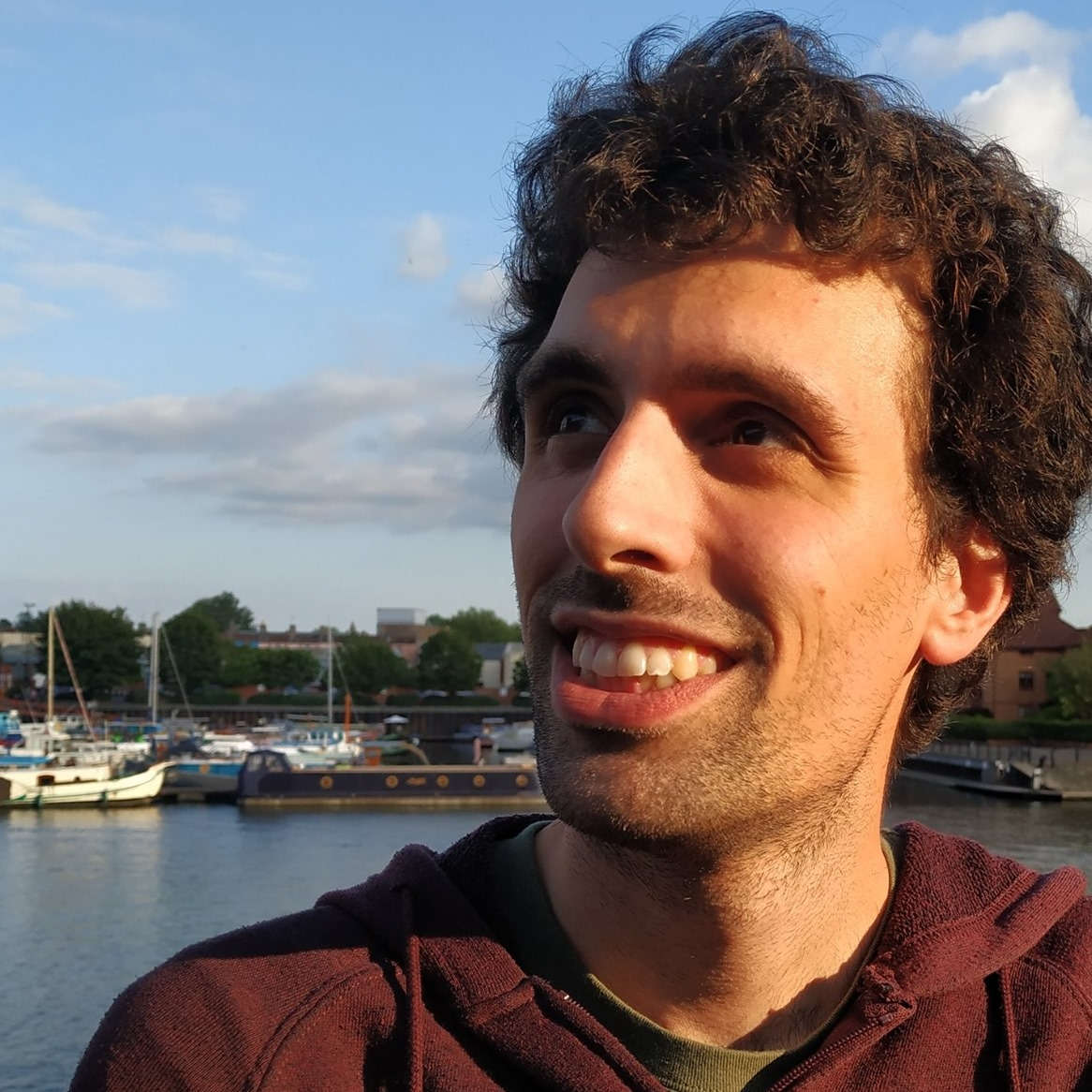
The author of this article: Leonardo Bison
Dottore di ricerca in archeologia all'Università di Bristol (Regno Unito), collabora con Il Fatto Quotidiano ed è attivista dell'associazione Mi Riconosci.Warning: the translation into English of the original Italian article was created using automatic tools. We undertake to review all articles, but we do not guarantee the total absence of inaccuracies in the translation due to the program. You can find the original by clicking on the ITA button. If you find any mistake,please contact us.